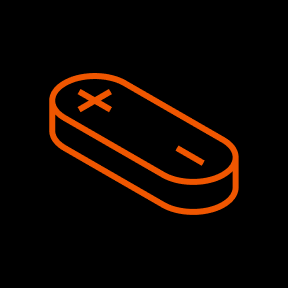
What is an SDR and How Do You Become One?
What is an SDR, and should you consider becoming one?
The sales landscape is full of interesting, fulfilling, and lucrative career opportunities. The role of an SDR is one of the most appealing entry-level positions for would-be professionals to consider for a number of reasons. First it offers an opportunity to build valuable skills in sales, from the ability to build rapport with your ideal customers, to qualifying leads.
Secondly, an SDR can earn a fantastic income, with an average salary of around $74,323 in offer in the United States. Here’s what you need to know if you’re thinking of becoming an SDR.
What is an SDR? Defining Sales Development Representatives
An “SDR”, or Sales Development Representative, is a crucial member of the sales team. These professionals often focus on the early stages of the sales process, prospecting for potential customers, validating leads, and moving them through the sales pipeline.
SDRs often act as educators for the ideal customers of a business, helping prospects to identify solutions to their problems. They spend a lot of time qualifying leads, to ensure the prospects send to other members of the sales team are a good fit for the business.
They also deal with tasks like cold calling, so other account executives have more time to close deals, and generate business growth. As an SDR, you’ll spend your time concentrating on inbound lead qualification, relationship building, and lead generation.
What’s the Difference Between a BDR and SDR?
The terms “BDR” and “SDR” are used interchangeably in a lot of landscapes. However, there are some distinct differences between the two roles. Business Development Representatives, or “BDRs”, are professionals responsible for expanding the company’s customer base.
BDRs use various prospecting strategies and methods to generate leads and potential customers. They help sales teams schedule meetings with clients, support the sales pipeline of the company, and work on outbound lead prospecting strategies.
SDRs, on the other hand, focus on moving leads through the pipeline, learning about their needs and requirements, and defining whether they’re a good fit for the business. SDRs often focus on inbound lead qualification, while BDRs focus on outbound leads.
Additionally, while a BDR focuses on finding prospects, SDRs play more of a role in the wider sales pipeline, moving customers through their purchasing journey.
How to Become an SDR: Step by Step
Demand for SDRs is consistently growing, making this an excellent career opportunity for many professionals. The role of an SDR can be ideal for those who are just getting started in the sales landscape, as you don’t necessarily need a lot of prior experience in sales to get started.
However, you will need to work on developing your skills, to boost your chances of success. Here are a few of the key steps involved in becoming an SDR.
- Invest in your Education
If you’re interested in becoming an SDR, it’s worth starting by investing in your education. While you don’t necessarily need a specific degree in this role, many SDRs do have a bachelor-level education. You can consider pursuing college degrees related to business and communications.
It’s also worth looking into other, less traditional forms of education. There are various courses, webinars, and certifications online that can help you to build your sales skills. You could even join a community like the Hard Skill Exchange to strengthen your sales knowledge.
- Develop the right skills
A good knowledge of the sales landscape and strong business acumen is often useful in an SDR role. However, there are some important soft skills you’ll need to work on too. For instance, you’ll need to be excellent at communication in this role. This means knowing how to use active listening throughout the sales funnel, and connect emotionally with customers.
You should be familiar with tools like social media for communication, and have a good ability to creatively solve problems for your company and your customers. A strong approach to collaboration can be useful too, as you may work with other business development reps and account executives.
- Develop Sales Experience
While the role of an SDR is often seen as entry level, it helps to gain a little experience before you start applying for this position. Working in a basic retail sale environment can give you some valuable experience in interacting with customers and showcasing products.
Keep in mind, some companies will offer their sales development reps training on the job too, so you’ll be able to continue honing your experience and knowledge over time. While you’re gaining experience, think about shadowing other sales managers and experts, so you can learn from their tactics. You could even consider getting a mentor.
- Build your Network
Networking is often extremely important to the sales landscape. The more connections you have with professionals in your field, the easier it will be to discover new job opportunities. Working on your network will also help you to become more familiar with the sales landscape.
You may discover new skills by interacting with others, and build your confidence in the sales space. Consider joining online groups and forums, following people on social media, and attending industry events whenever you can.
- Apply for Entry Level Roles
Once you feel you have the education and experience required for an SDR role, the next step is to start applying for entry-level jobs. The best way to improve your chances of success is to tailor every job application to the business you’re applying for.
Do your research into the company, just like you would if you were qualifying a B2B lead. Find out what kind of skills and experiences they’re looking for, and adjust your resume and cover letter accordingly. It’s also worth practicing your interviewing skills.
- Keep Working on Your Career
Finally, once you’ve earned your entry level role, you don’t have to stop there. You can continue looking for new ways to expand your career and unlock new opportunities. Within just a couple of years, you can start progressing towards more senior sales positions, and higher salaries.
You can also improve your chances of promotions and accessing new opportunities by consistently learning and building on your skills with new courses and certifications.
Starting your Career as an SDR
The role of an SDR can be a highly versatile and fulfilling one. If you have good communication and interpersonal skills, and you’re looking for a fast-paced and flexible working environment, this could be the ideal role for you. Just remember, while the SDR role is just “entry level”, it still requires commitment. You’ll need to keep working to ensure you’re truly successful.
Join a community of thriving sales professionals today, and use their skills and insights to power your new SDR career. At the Hard Skill Exchange, you can learn from some of the world’s leading sales experts, and start building your professional network.
Related posts
 arrow_east
arrow_east
December 4th, 2023
Transitioning from Sales to Customer Success
If you’re thinking of transitioning from a career in sales to customer success, you’re not alone. While sales roles can be extremely fulfilling (and lucrative), they’re not without their challenges. Sales can be a stressful environment, particularly as you strive towards higher win rates. Additionally, the sales landscape doesn’t mesh with everyone. Some people find […]
 arrow_east
arrow_east
December 3rd, 2023
What is Multi-Threading in Sales?
The term “multi-threaded sales” has begun to gain more attention in recent years, particularly among enterprise and B2B sales teams. Why? Because purchasing decisions in the modern world are rarely made by a single individual. In most businesses, virtually every step forward in the sales process is defined by your ability to build consensus among […]
 arrow_east
arrow_east
December 2nd, 2023
Finding Entry Level Jobs to Break into the Tech Industry
The tech industry is growing at a phenomenal pace, expected to reach a value of around $11.47 trillion by 2026. It’s also one of the most versatile environments for job seekers, offering roles in everything from web development to AI training and data analytics. While some tech roles require years of experience and specific credentials, […]